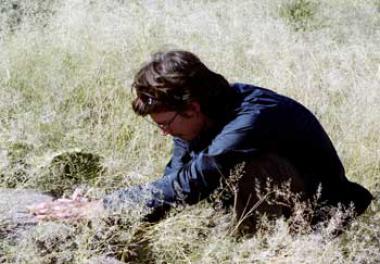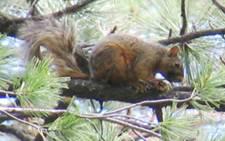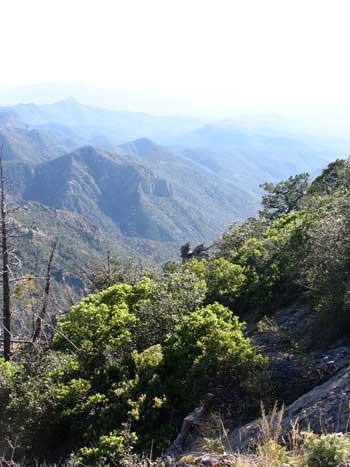Bret Pasch
Past Graduate Student

-
ENR2
1064 E Lowell St
Tucson, AZ 85719
Space use, ecology, & conservation of Chiricahua fox squirrels
Major Questions/Objectives
Chiricahua fox squirrels (Sciurus nayaritensis chiricahuae) are endemic to the Chiricahua Mountains of southeastern Arizona. A paucity of natural history information and uncertain conservation status served as impetus for us to initiate a descriptive ecological study of the species. In addition, we examined the impacts of human suppression of fire on patterns of habitat use and survival of Chiricahua fox squirrels in fire-suppressed and fire-prescribed areas of the Chiricahua Mountains. We used radiotelemetry techniques to elucidate space and habitat use, survivorship, and fire impacts in our investigation.
Major Findings
We found that Chiricahua fox squirrels differed in several capacities from more widespread species of tree squirrels. Females had a mean of 1.6 (range 1-2) offspring per litter and we found an overall population density of 0.07/ha, both parameters lower than other North American tree squirrels. Seasonal fluctuations in body mass and space use generally paralleled other species of tree squirrels with some notable exceptions. Male Chiricahua fox squirrels maintained a fairly constant body mass and large home range size throughout the year, in contrast to other tree squirrel species that typically show a reduction in both measures in non-mating seasons. Extreme spatial and temporal fluctuations of food experienced by Chiricahua fox squirrels might result in annual patterns in space use and body mass that differ from tree squirrels living in forests with a greater abundance of food.
We found differences in habitat use and survival of squirrels in areas of the Chiricahua Mountains with differing fire regimes (suppressed vs. prescribed). Core areas of squirrels within fire-suppressed areas were larger and contained more understory shrubs than core areas of squirrels in fire-prescribed areas. Shrub cover and canopy heterogeneity influenced core-area size and distance traveled, and squirrels that were depredated traveled farther than conspecifics that survived, but shrub cover and canopy heterogeneity were not directly associated with squirrel survival. Suppression-induced increases in understory vegetation might force squirrels to travel greater distances to meet energetic requirements and thereby increase predation risk. Retention of mature forested canyons and restoration of natural fire regimes will be important for the persistence of Chiricahua fox squirrels.
Publications
Pasch, B. and J. L. Koprowski. 2006. Sex differences in space use of Chiricahua fox squirrels. Journal of Mammalogy 87(2): 380-386. PDF of Article
Pasch, B. S. and J. L. Koprowski. 2005. Correlates of vulnerability in Chiricahua fox squirrels. USDA Forest Service proceedings RMRS-P-36: 426-428. PDF of Article
Pasch, B. S., J. L. Koprowski. 2011. Impacts of fire suppression on space use of Mexican fox squirrels. Journal of Mammalogy 92: 227-234 PDF of Article
Where is Bret Now?
Assistant Professor
Department of Biological Sciences
Northern Arizona University
Flagstaff, AZ 86011




